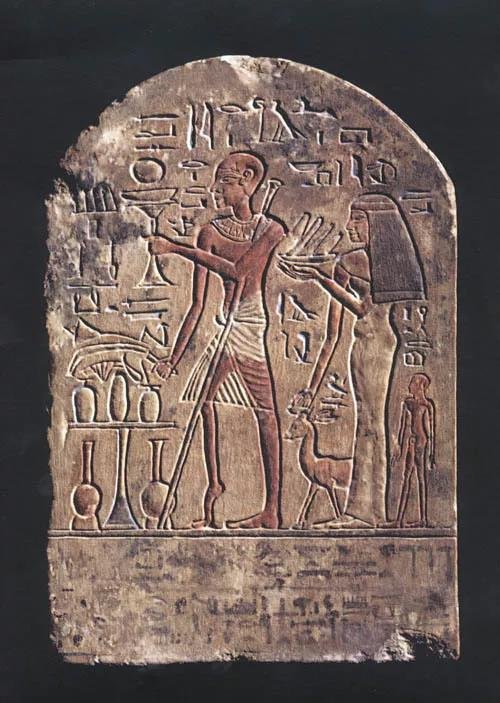When it comes to polio, what do you think of?
For young people, it's just a small "sugar pill" oral vaccine, but for people before the vaccine, polio was a dangerous disease. The hope of continuing life was once pinned on the bulky "living coffin"
Iron lungs: a tie with disease
Polio, officially called polio, is a disease caused by a virus that is highly contagious, and children are particularly vulnerable. 90% of people have no or mild symptoms after infection, but also because most cases are difficult to identify, making the disease easier to spread and causing dire consequences-1 out of every 200 infections has irreversible paralysis In cases of paralysis, 5% to 10% of patients die from respiratory muscle paralysis.

Treated children in the 1940s
In the first half of the 20th century, polio raged in the United States, leaving a large number of people with sequelae of dyspnea. They need to work hard to achieve the cycle of "expansion of chest breathing-contraction of chest breathing". The day is okay, and when falling asleep at night, the breathing disorder may cause the patient to die in his sleep.

Swimming pool in Elmira, New York, 1953, with signs indicating closure due to polio
In 1928, Iron Lung, which assisted breathing, appeared. This bulky iron can is like a horizontal oil barrel. When a person lays in an iron lung, only the head is exposed, and the elastic material is sealed around the neck.
When the iron lungs start to work, the electric pump draws out some air from the tank, reducing the internal pressure, and the person's chest expands, allowing external air to enter the lungs. After a few seconds, the air pressure in the tank recovers and the lungs shrink and collapse. Exhale the gas at the same time.

Inventor and Iron Lung in 1928
That year, a girl with respiratory failure due to polio had fallen into a coma. Medical staff at Boston Children's Hospital decided to give the new machine a try and put the girl in the iron lungs. After a minute, she woke up miraculously.
This wake up gave hope to all those struggling to breathe due to polio.

Iron lung patent design in 1928
By 1931, the inventor John Haven Emerson had improved the iron lungs. The new version of iron lungs is cheaper and only half the price of the old ones; iron lungs have also become better and more comfortable. Not only have they added beds that allow patients to slide in and out of the iron lungs, but they also have small windows on the bulkhead. Allow medical staff to reach into the iron lungs, help patients adjust their posture, or apply a hot compress to their cold bodies.


Use of iron lungs
The improved iron lung has been effectively promoted. In the 1940s and 1950s, the iron lung wards of hospitals across the United States were lined with dense machines, and every iron lung was filled with patients. By the 1950s, even the "iron lung wall" had appeared.

In the 1940s or 1950s, the iron lung ward of a hospital

Iron lungs customized for infants

In order to serve as many people as possible, the "Iron Lung Wall" appeared
From the current point of view, people lie in the cold and heavy machine and only show their heads, which is a bit weird and weird. But the medical staff, patients and patients' families did not think so. They all have relaxed smiles in the photo, just like saying to the people on the other side of the lens: "Look, the technology is so advanced, I'm saved!"

Little girl in iron lungs
Living in a "living coffin"
Mary Virginia was born in 1930. In the summer when she was 7 years old, she returned to the public swimming pool and felt a little dizzy. After a few hours, her lower body was unable to move. After 2 days, Mary was diagnosed with polio and lived in the iron lungs.
Dozens of children like Mary lived in the iron lung ward of this hospital. Nurses from time to time put their hands into the iron lungs to massage the children to prevent their muscles from atrophy. When the children need to urinate, the nurse will temporarily open the iron lungs, put a bedpan under the child, and then close the iron lungs. When the children are finished, the nurse repeats the above steps and takes out the bedpan.

Put the baby in the iron lungs
In view of the high cost of travel and the long distances, children can't see their parents most of the time. Most of the sober and boring time can only be passed on by reading books.

Recovery steps for iron lung users: Survive in iron lungs, leave iron lungs, breathe spontaneously, stand up and start a new life
Marshall Barr also developed polio in 1949. At the age of 7, he was in a wheelchair, and his spine flexed slowly over the next ten years, so he had difficulty breathing and had to live in an iron lung. "Just lying inside, it should be easy," Marshall thought.
But things are not so simple. He soon discovered that eating in the iron lungs was not easy: first, because the body was lying flat, food inevitably leaked, and second, he had to follow the rhythm of the iron lungs to control swallowing, and he could only use the machine to make himself call When you are angry, take your time and swallow the food.
By the way, there is also tickling, if there is no one nearby to do it for you, the itching on the face can only endure.
Sometimes doctors allow Marshall to move outside the iron lungs and sit with a cup of tea. But ten minutes after leaving the iron lungs, Marshall's fingers turned blue due to hypoxia, and he had to lie back to the iron lungs again. After 3 weeks, Marshall's breathing condition improved, and his life was saved. He was discharged on the advice of a doctor and bought an iron lung for spare at home.
The last iron lung
In the 1950s, the polio vaccine was successfully developed and promoted, and the spread of the disease was effectively controlled. At the same time, new and lighter ventilators were invented and used to replace the expensive and heavy iron lungs. In 2013, only about 6 to 8 patients in their early years still used iron lungs to maintain their lives out of habit.
Martha Lillard was born in 1948. When she contracted polio at the age of five, she never left the machine. Today, Martha must lie in her iron lungs while sleeping. "I'm like a personal battery. I work during the day and return to the cabin to charge at night."

Masha as a Child
Using iron lungs in the 21st century is not a worry.
The first is to worry about power outages. In 2008, a heavy rain in Tennessee caused power outages, killing an old woman in an iron lung. In order to keep the iron lung's electric pump running, Martha had to keep a generator at home.
Maintenance of iron lungs is also a big problem. Martha's iron lungs have been replaced with fan belts and engines more than a dozen times, but it is still necessary to reduce the wear of parts as much as possible-the sealing ring around the neck is a consumable item, and a new one is required every few months The sealing effect is guaranteed, but the sealing ring is getting more and more difficult to buy. Martha can only use her iron lung to avoid turning her neck as much as possible. It is expected to extend the service life of the sealing ring through this method.

What if there is no manufacturer to produce parts in the future? Martha, who had passed the dying years, said calmly, "If these things are not available, I will die."
Iron Lung Apocalypse
Polio is almost as old as the history of human civilization, recorded in ancient Egyptian lithographs more than 3,000 years ago. People have difficulty breathing due to illness, physical disability, and even death.

Polio sequelae on ancient Egyptian lithographs
The emergence of iron lungs has caused humans to draw a battle with polio-we cannot defeat the disease, but the disease cannot easily take life away.
With the advent of the polio vaccine, humans have gradually gained an advantage in this battle. October 24, 2019 is World Polio Day. UNICEF said on the same day that the number of infected children has fallen by 99% since 1988, and the number of recorded cases worldwide has fallen from 350,000 in 1988 to today Of the 100 cases, the number of affected countries dropped from 125 to 2 (Afghanistan, Pakistan). Humans are already on track to eradicate polio.

Nurse is giving polio vaccine to baby in a clinic in Zambia
As a product of the "tie" period, iron lungs and their users should exist as war memorials. Mona Randolph, an iron lung user in his 80s, said: "When children ask me what I have experienced, I will tell them that the nerves that control my muscles are broken by the virus I will also ask them if they have been vaccinated against polio. (See how I use iron lungs.) No one will oppose the vaccine anymore. "

Mona and her iron lungs. Now she needs to sleep in the iron lungs for six nights a week
Source
Direct translation without giving credit to the original author is Plagiarism.
Repeated plagiarism is considered fraud. Fraud is discouraged by the community and may result in the account being Blacklisted.
If you believe this comment is in error, please contact us in #disputes on Discord
Please note that direct translations including attribution or source with no original content is considered spam.
Information post. Nice friends
ahh